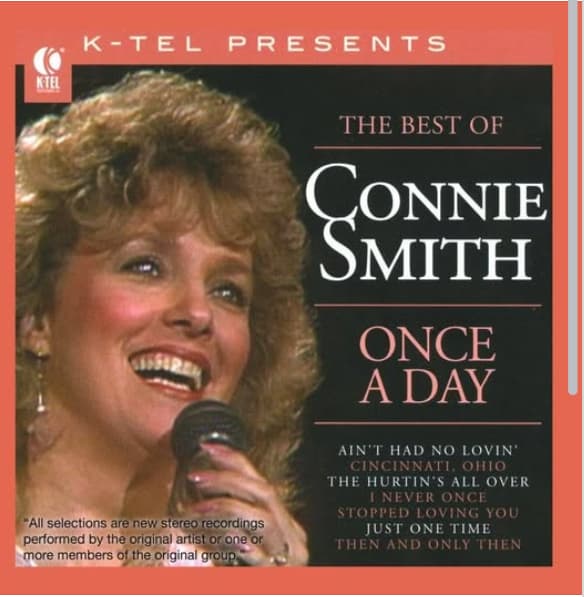
Once a Day: A Deceptively Simple Lament of Enduring Heartbreak
Oh, how the memory lingers, like the last wisp of smoke from an old jukebox in a dimly lit honky-tonk. There are certain songs that don’t just occupy a space in our minds, they define a feeling, an era. Connie Smith’s “Once a Day” is one of those timeless treasures. It’s a song that, upon its release in August 1964, didn’t just climb the charts—it settled in, becoming a permanent fixture in the country music landscape and, for many of us, the soundtrack to a season of heartache. It wasn’t just a hit; it was a phenomenon, a record-breaking masterpiece that established a legend.
The story behind this classic is as poignant as the song itself. The brilliant songwriter Bill Anderson, affectionately known as “Whisperin’ Bill,” had already been a star in his own right, but he’d also become a master craftsman for others. He had heard about a young woman from Ohio with a voice that could tear your heart out and put it back together again. That woman was Connie Smith. He penned this song specifically for her, a decision that would not only change her life but also leave an indelible mark on country music history. He took a chance on this unknown talent, and when she stepped into the fabled RCA Studio B in Nashville, the magic was undeniable. The session, produced by Bob Ferguson, captured something raw and genuine, a perfect storm of a masterful song, an iconic vocal performance, and the quintessential Nashville sound of the era.
“Once a Day” became Connie Smith’s debut single, a shot fired from a newcomer that sent a ripple through the industry. The single’s chart performance was nothing short of historic. It reached the top of the Billboard Hot Country Singles chart on November 28, 1964, and stayed there for an astonishing eight consecutive weeks. This was a record-breaking feat for a female solo artist, one that would stand for nearly 50 years until it was surpassed by a more modern, pop-infused hit. It’s a testament to the song’s power that a debut single could achieve such lasting dominance. It wasn’t just a number one; it was the number one. The success launched her self-titled debut album, Connie Smith, to the number one spot on the country albums chart as well. Her voice, a mix of pure vulnerability and powerful conviction, was something the world hadn’t heard before, and it made her an overnight sensation.
The meaning of “Once a Day” is a masterclass in lyrical deception and emotional depth. The song opens with a seemingly hopeful thought: the singer is over her ex, or at least she’s getting there. “I thought then I never could,” she sings, “But time has taken all the pains away / Until now I’m down to hurtin’ once a day.” A listener might initially breathe a sigh of relief. Only once a day? That’s progress! But the brilliance of the lyrics, and what makes the song so gut-wrenching, is in the punchline of the chorus. She clarifies: “Once a day, all day long / And once a night, from dusk ’til dawn.” The “once a day” isn’t a fleeting moment of sorrow; it’s an all-consuming, never-ending cycle of pain. It’s the kind of heartbreak that seeps into every waking hour and haunts every sleepless night.
For so many of us who lived through that era, and perhaps a heartbreak or two of our own, this song resonated deeply. It wasn’t a melodramatic tale; it was a simple, honest confession of lingering sadness that felt all too real. The steel guitar moans in the background, mirroring the ache in her voice. Connie Smith didn’t just sing the words; she lived them. It’s a performance so genuine and soulful that you can’t help but feel her pain. Dolly Parton once famously said, “There are only three great singers: Connie Smith, Barbra Streisand, and Linda Ronstadt.” That’s the kind of company she keeps, and it all began with this one perfect, heart-stopping song. Decades later, “Once a Day” was recognized for its enduring cultural and historical significance, earning its place in the Library of Congress’s National Recording Registry in 2021. It’s a beautiful tribute to a song that, for so many of us, still hurts just as much as it did the very first time we heard it.